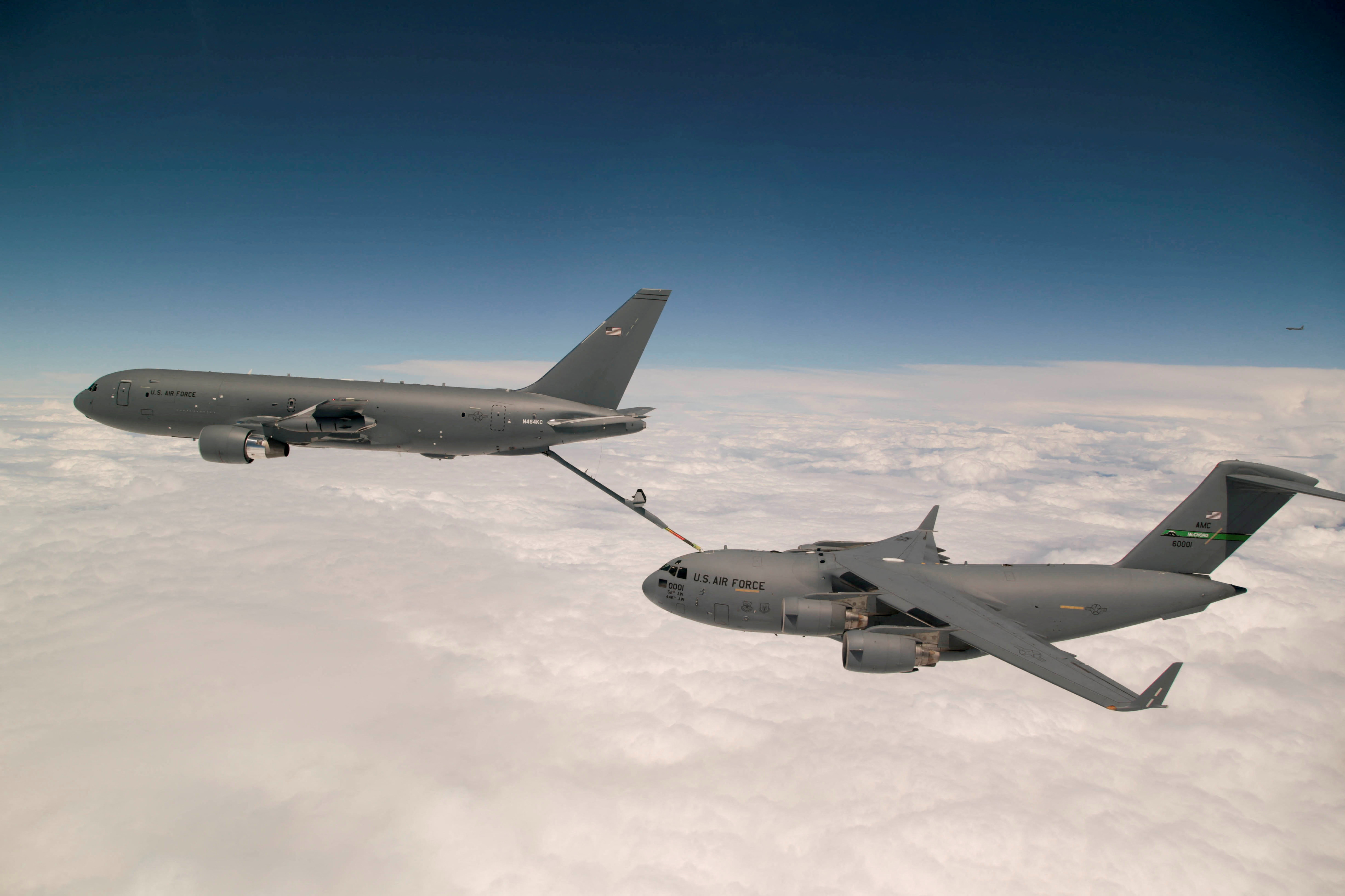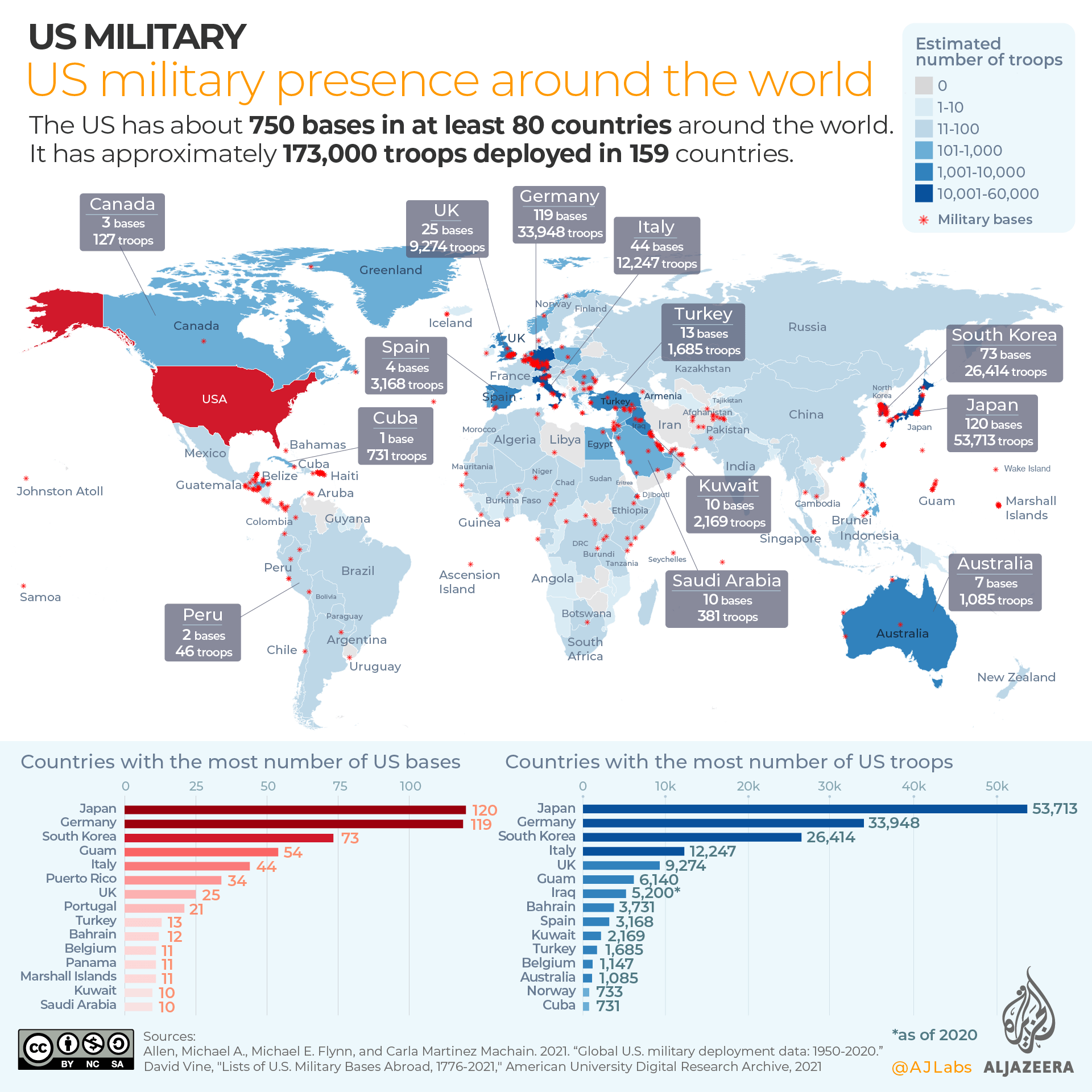
The US military is vast in scale, with a carbon footprint larger than any other institution on earth. But when it comes to disclosure of its emissions of greenhouse gases, it’s been kept off the books – and has been let off the hook.
“It’s the elephant in the room,” said David Vine, author of, Base Nation: How US Military Bases Abroad Harm America and the World. “It operates with this kind of cloak of invisibility despite having a long track record of very serious damage.”
The environmental impact of the US military machine was documented in two 2019 reports, which revealed it to be the world’s largest institutional consumer of hydrocarbons, belching out more emissions than industrialised nations like Portugal and Denmark.
Yet its contribution to heating the planet is largely overlooked, the US government having lobbied for an exemption for military activity from the 1997 Kyoto Protocol that set binding emissions targets for signatory nations. During the 2015 Paris talks, the exemption was removed, but reporting of military emissions remains optional.
With world leaders currently debating the consequences of climate change at the COP28 summit in Dubai, here’s a look at the environmental costs of the US military.
How big is the US military?
Huge. In terms of budget, firepower and presence, the US outguns all armies in the world – including China, first in terms of number of soldiers, and Russia, owner of the largest stockpile of nuclear weapons.
The Pentagon does not release data on bases. But Vine’s research shows that it has more than 750 overseas US military bases in about 80 countries – more than any empire in world history.

All this costs a lot of money. US military spending hit nearly $877bn in 2022, representing nearly 40 percent of the total global spend.
“The US now has more than triple the number of overseas bases as it does diplomatic missions, all of which require fossil fuels for operations and generate waste and pollution,” said Patrick Bigger, research director of the US-based Climate and Community Project (CCP).
What is its impact on climate?
As a whole, militaries are among the world’s biggest consumers of fuel, accounting for 5.5 percent of global emissions, according to a recent report, published by CCP and UK think tank Common Wealth. By comparison civil aviation accounts for around 2 percent.
Representing at least three-quarters of global military presence, the US armed forces are by far the biggest emitters. Figures are sparse, but they are estimated to have bought approximately 269,230 barrels of oil a day in 2017 – a figure racking up to about 100 million barrels that year.
Fuel consumption has shot up over the decades. While the average US solider accounted for 3.8 litres (one gallon) of fuel consumption in WWII, that figure had ballooned to 83.3 litres (22 gallons) by the time the US invaded Iraq in 2003.
The modern tally would include military kit, equipment and powering all modern conveniences of the suburban US across the globe. But, said Bigger, the bulk of fuel is guzzled by weapons systems – tanks, ships and planes – as much as 80 percent going on fuel for fighter jets operating at high altitudes.
Damage is by no means limited to wartime. Between 2001 and 2018, only a third of US military emissions were related to its major zones of operation, such as Iraq and Afghanistan.
Beyond the front lines, the impact of the military extends into a sprawling network of carbon-intensive manufacturing supply chains (PDF). According to the Department of Defense, the average American aerospace company relies on roughly 200 main suppliers, with more than 12,000 companies in the lower tiers.
“The US is really the 800-pound gorilla of military emissions, both in terms of operations and in terms of the military-industrial complex,” said Bigger.
What about other forms of environmental damage?
Damage wrought by the US armed forces goes beyond carbon emissions. Rampant military expansion has also affected air quality, ecosystems, biodiversity and the health of local populations living around bases.
The recent history of military harm goes back to the days of nuclear testing on Bikini Atoll in the Marshall Islands, where the US carried out 67 detonations between 1946 and 1958, exposing residents to Chernobyl-like levels of radiation.

The so-called “war on terror” also left a legacy of environmental damage and major health problems in places like Iraq and Afghanistan, where the US military routinely incinerated plastics, electronics and other toxic waste in giant burn pits.
To this day, the wrecking continues, with the widespread use of per- and polyfluoroalkyl substances (PFAS), a so-called forever chemical mainly found in fire-fighting foam, on domestic installations and foreign bases like Okinawa in Japan. Resistant to breakdown, these chemicals poison the waters, causing birth defects and cancer.
“The basic fact is that military bases are not good for the environment,” said Vine, author of Base Nation. “By definition, they are concentrations of often huge quantities of highly hazardous destructive materials and weaponry that are not good for human beings and other living things.”
Is anything being done to reduce the impact?
The US economy benefits greatly from military expansion, with state subsidies flowing into key industries across the country.
Khem Rogaly, a senior researcher at Common Wealth, observed that manufacturing projects are used to build political support in congressional districts. Take the construction of F35 fighter jets, with supply chains spanning nearly all US states.
Amounts allocated to green initiatives pale in comparison with the hundreds of billions spent on the US military each year. The Inflation Reduction Act, the federal government’s main tool for decarbonising the economy, aims to funnel the sizeable, yet comparatively meagre figure of $369bn over a 10-year period into tax credits and funding for green energy projects.
Still, cognisant of the dangers posed by climate change, the US military has tried reduce its impact. Last year, it unveiled its strategy for reaching net-zero emissions by 2050. Included are plans to make more army vehicles electric and to modernise “power generation, battery storage, land management, procurement” and “supply chain resilience”.
Rogaly reckoned that decarbonising fighter jets would be a challenge. “Building a jet system like the F-35 requires many billions of dollars of investment between international partners, so you’re sort of locked into using one system for decades. That’s not going to facilitate moving to something else,” he says.
Will COP28 be making militaries more accountable for emissions?
The UN Environment Programme (UNEP) has warned that the world can expect a dramatic 3-degree-Celcius (5.4-degree-Fahrenheit) temperature rise this century.
According to UNEP’s report, published on 20 November, countries will have to cut 42 percent from projected 2030 emissions to avoid breaching a previously agreed limit of 1.5C (2.7F) above pre-industrial temperatures.
Meanwhile, UN Secretary-General Antonio Guterres has said that COP28 should adopt a “no exceptions” policy towards emissions.
Still, despite the clear urgency of the problem, the military blind spot looks set to remain in place. There are no indications that countries will be obliged to include military emissions in their decarbonisation efforts.
However, the summit is featuring discussions on climate and conflict, linking the issues for the first time in the context of UN talks. Bigger believed it was a start, helping to launch a debate on how warring is affecting Global South countries now bearing the brunt of climate disaster.
“There’s no increase to aggregate human security by endless military spending and endless military deployment,” he argued. “Do we take that seriously? Or do we maintain it as the infrastructure for global climate apartheid?”







